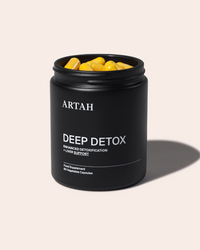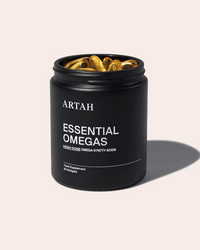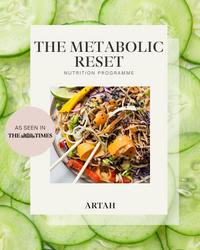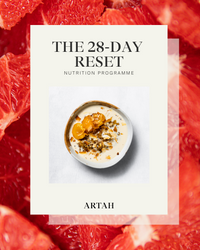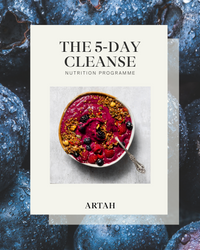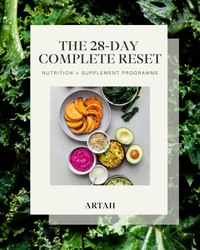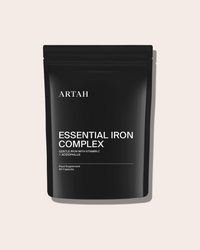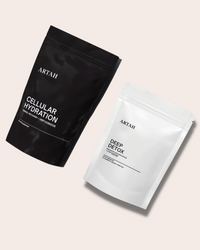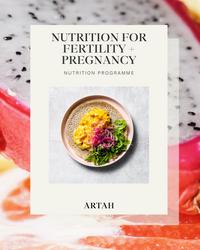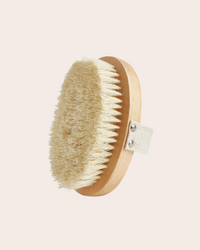Gluten + Your Gut
Gluten is a hot (and polarising) topic when it comes to nutrition.
You'll often find nutritionists and dieticians firmly on opposite sides of the spectrum, with some toting the benefits of gluten free life and others demonising it as an extreme ‘clean eating.’ So, what’s the real deal when it comes to gluten, and how do we know if it’s right for us? The answer may surprise you.
Whilst celiac disease only affects about 1% of the population, gluten sensitivity is more common than you’d think. There are actually four different types of sensitivity or allergic reactions that are associated with gluten – celiac disease, gluten sensitivity, gluten allergy and wheat allergy - but the tie that binds them together is mostly linked to the gliadin, one of the proteins in gluten.
Dr Alessio Fasano is leading the way in research on non-celiac gluten sensitivity (NCGS), a condition which we now know can cause a wide range of moderate to severe symptoms that are nearly identical to those of which celiac patients experience, minus the villous atrophy (which is the damage caused to the lining of the microvilli of the intestine seen in celiacs). Diarrhoea, IBS, bloating, abdominal pain, joint pain, depression, brain fog, anxiety, headaches, fatigue, and neurological damage are all symptoms of NCGS.
Leaky gut – science or fiction?
To understand why gluten can be so detrimental to our health, it’s important to first understand how it interacts with our system. As gluten is metabolised into its constituent parts, gliadin triggers the release of a protein called Zonulin, which helps regulate the permeability (commonly referred to as the leakiness) of the gut by opening and closing the junctions in the lining of the digestive tract. This is a natural, protective mechanism in the body – in a normal gut, the junctions close back up and the intestine becomes normal again. In a sensitive gut, or when exposure is constant, the junctions stay open for longer (as long as we are exposed to gluten), which allows peptides, bacteria and other toxins to enter the blood stream. This can contribute to immune activation, inflammation, and the other symptoms that can be associated with gluten sensitivity. This is where the term leaky gut comes from - but the more scientific phrase is increased intestinal permeability - and yes, it is a real thing.
How do you know if you’re sensitive?
Our level of sensitivity to gluten can be genetic, but it can also fluctuate with our health. Bacterial infections, for example, can also trigger the release of Zonulin and increase inflammation in the gut, so we’re always more sensitive (to anything gut related) post-infection, post-antibiotic use, or following periods of extreme stress. To determine if a gluten free or low gluten life is right for you, start by jotting down your daily symptoms and food habits. Common symptoms of NCGS include:
— Bloating— Diarrhoea + IBS
— Abdominal or joint pain
— Unexplained fatigue
— Brain fog
— Headaches
— Poor immunity/frequent infections (unwell more than once year or taking antibiotics 1x per year or more)
— Anxiety + neurological symptoms (think agitation, lack of concentration, etc)
— Eczema + autoimmune conditions (whilst these are not necessarily symptoms of gluten sensitivity, they can be highly reactive to or triggered by gluten)
Once you’ve done this, do a gluten inventory. When you factor in sauces, condiments and grain-based foods, it's common that upwards of 75% of typical meals in the standard western to have gluten in them.
If you’re suffering from any of the above symptoms and are regularly consuming gluten, try an elimination. If you only tick one or two of the above, you can stick to 28 days. If you’re symptoms are more chronic, aim for 6-8 weeks. If gluten is a staple food, it’s important to ensure you’re replacing it with other appropriate foods, so make sure you arm yourself (and your pantry) with everything you need (think more rice, quinoa, buckwheat, millet, amaranth + root veg). Aim to focus on real foods and not GF items from the supermarket, which are often laden with sugar, preservatives, emulsifiers and processed starches.
Regardless of whether you have symptoms, doing a gluten elimination can tell you a lot about your health and digestion. Many of us settle for feeling ‘fine’ (instead of GREAT) or haven't made the connection between stress, anxiety or fatigue and what we’re eating, so avoiding gluten for 28 days can often give you valuable insight to your health. It also comes with the added benefit of eliminated a lot of highly processed foods - which is never not a good thing.
Bringing it back in.
Once you’ve completed your elimination, you can then test your tolerance by bringing it back into your diet.
- It’s important to keep your first meal with gluten quite 'mono' in nature, meaning it shouldn’t be combined with other inflammatory or potential allergenic foods (alcohol, dairy, food chemicals like MSG, of anything else you know you're a little sensitive to). For example, plain focaccia with olive oil would be preferable to pizza with cheese + other toppings. Pasta with olive oil, herbs, tomato + salt would be better than a carbonara, and so on.
- Have gluten once, and then wait for 3 full days. Whilst some symptoms may appear immediately/within hours, others like anxiety, headaches, swelling, pain or skin flare ups may take up to 72 hours. Notice how you sleep, and how you feel upon waking. Your bowel movements, skin, mood, appetite, how your body feels, and your energy.
- If you don’t have a reaction, have another meal that contains gluten, following the same guidelines.
- If after 3 days you don’t react again, then you can slowly start to bring some staples back into your diet. BUT, It's important to continue to observe how you feel. You may be fine consuming gluten a few times a week but start to notice symptoms if you get back into a daily habit.
Keep a cap on it.
Because it’s been proven to cause inflammation in the gut, it’s a good idea to limit your gluten exposure. Ditching wheat-based products will also limit your refined flour intake (always a good thing) and encourage you to increase plant diversity and the consumption of other health promoting pseudograins, increasing your exposure to a wider variety of nutrients.
Your Toolkit.
— If the idea of avoiding gluten feels overwhelming and you need guidance, recipes + inspiration for how to follow a successful elimination, try The 28-Day Reset.
— For supplemental support, G.I. Fix is packed with prebiotic, probiotic, anti-inflammatory and gut nourishing botanicals that can help you repair the lining and restore gut integrity.

— For a list of some of the most common hidden sources of gluten: https://gluten.org/2021/03/23/43-foods-where-gluten-may-be-hidden/










